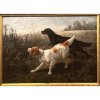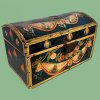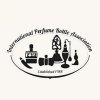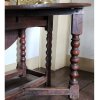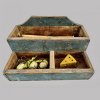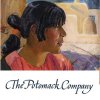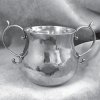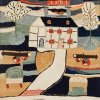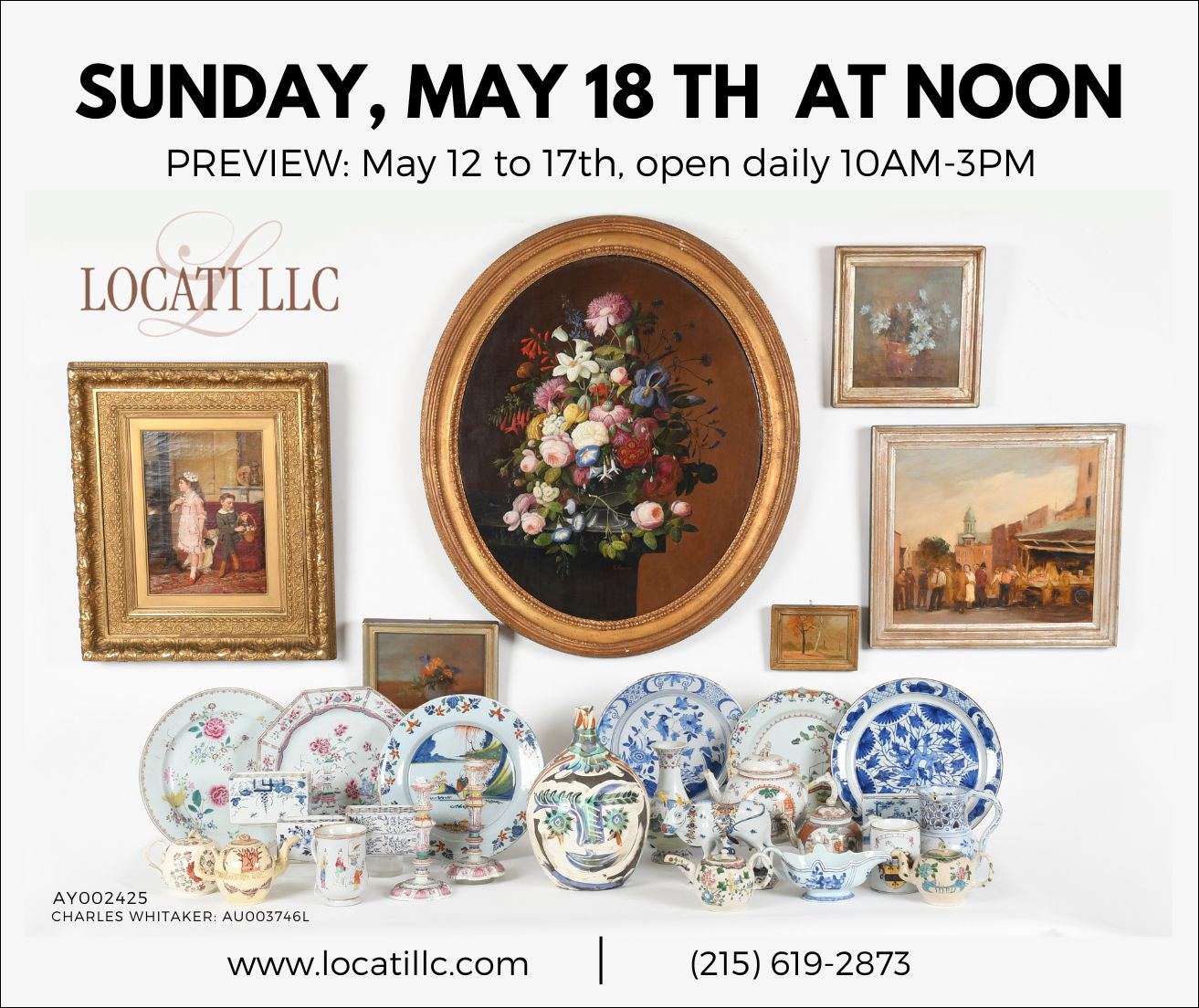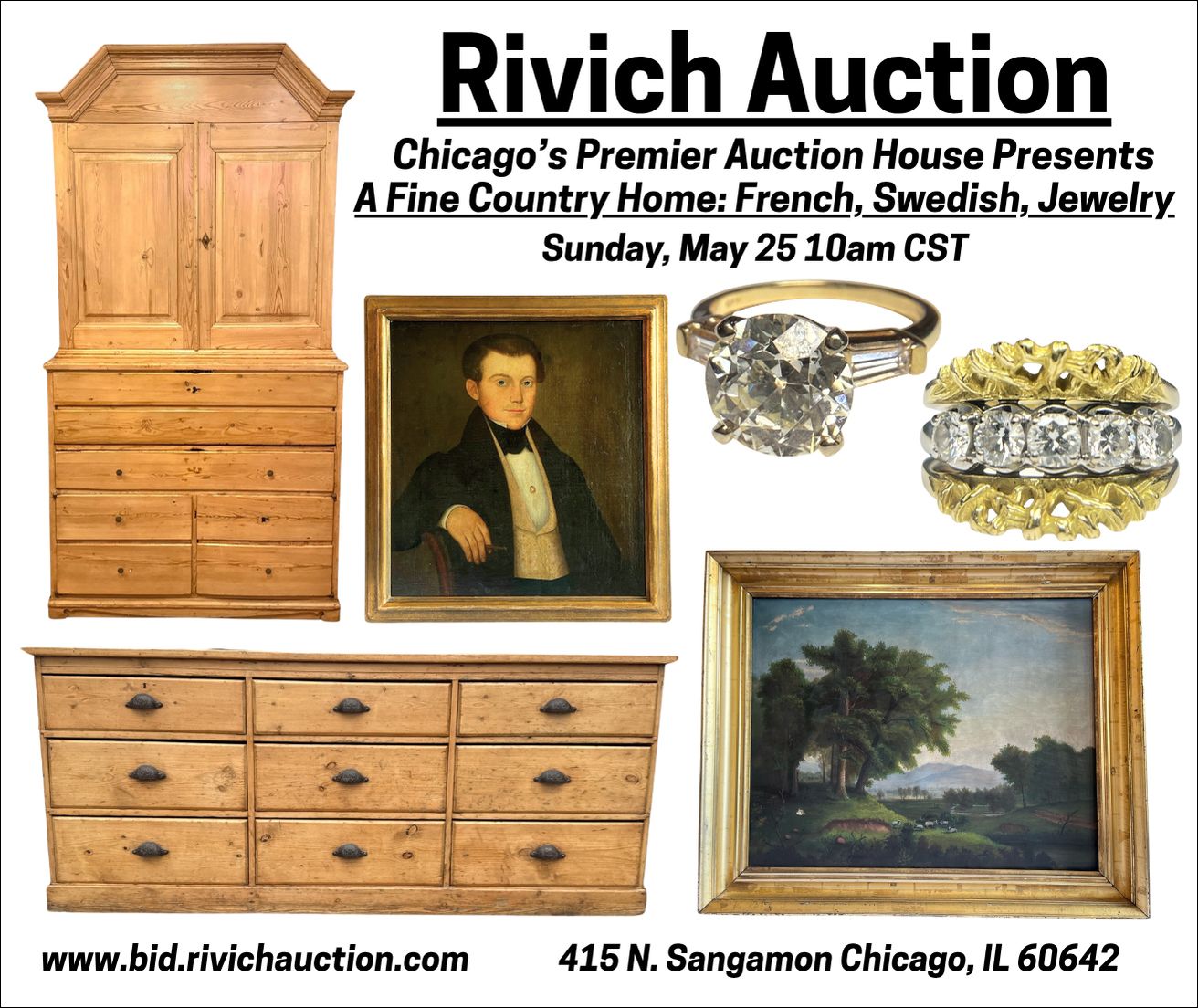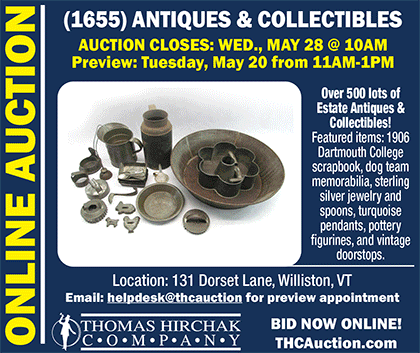Copley's Winter Sale of Sporting Arts Makes $1.4 Million
February 17th, 2017
Copley Fine Art Auctions, Charleston, South Carolina
Photos courtesy Copley Fine Art Auctions
Fine art, bronzes, and vintage fishing gear followed by an extensive array of vintage and contemporary decoys composed the Winter Sale 2017 hosted by Copley Fine Art Auctions, LLC on February 17 at the American Theater in Charleston, South Carolina. Up for grabs were items from the estate of Joyce and Larry Huffman and the collections of Richard and Lynn Gove, Ernest and Carolyn Kramer, Blair Ledingham, Grant Nelson, Shane Newell, John T. Ordeman, William H. Purnell Jr., and William B. Webster III, and collectors took notice.
This annual auction, held during the Southeastern Wildlife Exposition (SEWE), brought together sporting art enthusiasts from the world over. This year’s sale total surpassed the $1.4 million mark. Equally as impressive is the auction’s 91% sell-through rate, with the items offered achieving 91% of their high estimates.
“SEWE drew a record-breaking 40,000-plus visitors this year, and our auction experienced the largest attendance since we moved our Winter Sale four years ago,” stated Copley’s owner and principal Stephen B. O’Brien Jr. “John Powell and his team do an incredible job putting on SEWE, and we are happy to be a small part of it.”
Concerning the outcome of this year’s Winter Sale, O’Brien added, “We saw some of the most active bidding in years across all categories despite a relatively modest offering. There was no question that broader markets had an impact on this sale. We saw some of the most competitive bidding in seven years.”
More than 200 lots of fine art and fishing items kicked off this one-day affair, and again the dogs were best in show. Artworks featuring canines are perennial favorites, and this Copley event saw the trend continue. Two works by Edmund H. Osthaus (1858-1928) sold strongly, with Pointer and Quail being the top painting of the auction. Signed and dated “Edm. H. Osthaus 1892” at lower left, this image sold for $63,000 (includes buyer’s premium), above the $30,000/50,000 estimate.

Edmund H. Osthaus (1858-1928), Pointer and Quail,1892, signed and dated “Edm H Osthaus 1892” lower left, oil on canvas, 27" x 24", $63,000 (est. $30,000/50,000). Kay and George Evans, in the June 1970 edition of Field & Stream, wrote, “Edmund Osthaus followed field trials from the fall prairie chicken trials in Canada to the important quail trials in the South in mid-winter, judging, sketching, and sometimes entering his dogs. He was a handsome, powerfully built man….” The Copley catalog states that “his artistic talent combined with his love of dogs enabled him to capture the essence of the focused working dog while depicting them in precise anatomical detail.”
Born in Germany, Osthaus studied at the Royal Academy of the Arts in Dusseldorf from 1874 to 1882. He immigrated to Toledo, Ohio, in 1882. Osthaus became an instructor at the Toledo Academy of Fine Arts in 1883 and later served as its director. Though an artist and instructor, Osthaus was also a hunting and fishing enthusiast, as his artwork reflects.
Another Osthaus work, On Point, an oil on canvas depicting two dogs who have found their quarry, surpassed its estimate, selling for $44,400 (est. $25,000/35,000), and while it is interesting to note that the orange and white setter in the image is a striking likeness to the artist’s dog “Uncle Billy,” the real back story to this work is the painting’s former owner.

Edmund H. Osthaus (1858-1928), On Point, signed “Edm. H. Osthaus” lower right, oil on canvas, 33½" x 23½", $44,400 (est. $25,000/35,000).
Alvin Brooks Tillinghast of Toledo, Ohio, is often remembered as “one of Toledo’s most important industrialists.” The lavish Tudor mansion in Toledo known as the Tillinghast Willys Bell Home, built by Tillinghast, is an excellent representation of his living life to the fullest. His accomplishments, according to the catalog listing, included a “retail grocery business, owner of a powdered licorice company, vice-president of the Central Savings Bank Company, president of the Royal Brush & Broom Company, traveling book salesman for James Pott & Co. Publishers, and founder of the Toledo Rocker Tip Co.” Tillinghast was also one of the original trustees of the Toledo Museum of Art. He was a friend of Osthaus, and they lived just down the street from each other for a portion of their lives.
The Depression and his varied business concerns led Tillinghast to ask “his insurance agent, Merritt Mason, for help when he could not keep up with payments. Family lore and a handwritten note on the back of the painting say Mason bought ‘On Point’ in 1927 or 1928 while he was a district manager for Northwest Mutual Insurance in Northwest Ohio.” This image came to auction via Mason’s family.
Wonderful art with interesting provenance was the order of the day. The art of George Goodwin Kilburne (English, 1839-1924) is known for its precision of detail, especially in how people dressed. This can be seen in The Beaufort Meeting at Frocester, done in 1904. The painting’s subject matter reflects a scene from one of the oldest and best-known hunts in the United Kingdom, the Beaufort. What sets this image apart is Kilburne’s dedication to depicting each individual in his or her precise dress. From a private Michigan collection, this hunt scene crushed its estimate, selling for $32,400 (est. $4000/6000).

George Goodwin Kilburne (English, 1839-1924), The Beaufort Meeting at Frocester, 1904, signed and dated “Goodwin Kilburne 04” lower right, oil on canvas, 23" x 39", $32,400 (est. $4000/6000).
A Frank W. Benson (1862-1951) watercolor, Wood Duck, is an excellent example of his etchings and paintings of wildfowl and upland birds that earned him the moniker “America’s most medaled artist” by the time he was 60 years old. The frontispiece for William Brewster’s 1937 book Concord River, this image shows four wood ducks, two males and two females, in flight, preparing to land. The watercolor sold for $37,200 (est. $40,000/50,000).

Frank W. Benson (1862-1951), Wood Duck, 1937, signed and dated “F.W. Benson ’37” lower right, watercolor, 26" x 20¼", $37,200 (est. $40,000/50,000).
Contemporary wildlife art that sold strongly included Lions by Bob Kuhn (1920-2007), which sold for $19,200 (est. $15,000/25,000). Oystercatchers, signed and dated “Ewoud ’15” by artist Ewoud de Groot (Dutch, b. 1969), sold for $13,200 (est. $8000/10,000), and then there was Tails by John Swan (b. 1948).

Ewoud de Groot (Dutch, b. 1969), Oystercatchers, 2015, signed and dated “Ewoud ’15” lower left, oil on canvas, 27½" x 55", $13,200 (est. $8000/10,000). This artist is known for art that is both representational and abstract. Ewoud de Groot strives not for exact details but instead for art that conveys “a sense of mood and atmosphere found in the natural world,” according to Copley.
This oil on canvas by Swan, considered “one of America’s foremost sporting and wildlife artists,” according to Copley, was sold as a fundraiser for the Bonefish and Tarpon Trust (BTT). According to Copley “50% of the proceeds from the sale of Tails will go directly to BTT, whose mission is to conserve and enhance global bonefish, tarpon, and permit fisheries and their environment through stewardship, research, education, and advocacy.” This painting made $12,000 (est. $8000/12,000). John Swan is the 2017 featured artist for the BTT. Copley then revealed that “a very generous anonymous donor agreed to a matching gift of up to $10,000 on this work.”
With the artwork having found a new home, it was time to move on to the numerous decoys Copley brought together for the sale. And the selection was stellar.

Standing 17" tall, this circa 1910 wading greater yellowlegs pair by Noah Bernard Sterling (1884-1954) of Crisfield, Maryland, sold for $27,600 (est. $18,000/24,000). Minimalist in design, these yellowlegs are the epitome of folk art.
Leading the way was the Herrick-Ward yellowlegs Bunn/Bowman decoy, an example that came from a private collection. According to Copley, “The majority of the birds from this famous Herrick collection reside at the Long Island Museum in Stony Brook.” The decoy was attributed to Charles Sumner Bunn (1865-1952) of Shinnecock Reservation, New York, or possibly William “Bill” Bowman (1824-1906) of Bangor, Maine. This shorebird’s near-perfect painted surface and form and the fact that it still had its original inserted bill and wing tips had collectors swooning. After a heated battle between a phone bidder and an in-house buyer, the yellowlegs went to the in-house bidder, who paid $90,000 (est. $50,000/70,000) for the privilege of taking this beauty home.

This circa 1900 yellowlegs by Charles Sumner Bunn (1865-1952), Shinnecock Reservation, New York, or William “Bill” Bowman (1824-1906) of Bangor, Maine, and Lawrence, New York, was 11¾" long and sold for $90,000 (est. $50,000/70,000).
Then the next lot, a McCleery golden plover, thought also to be by Charles Sumner Bunn or possibly William “Bill” Bowman, had bidders grappling anew until it sold for $69,000 (est. $50,000/70,000) to the same buyer of the aforementioned yellowlegs. Copley described this decoy as “one of the finest plover decoys known.” The original paint on this plover grabbed attention.
The fact that only a handful of Charles Birch (1867-1956) swan decoys are known to exist had collectors excited for the opportunity to acquire the example offered by Copley. With its hollow body, down-turned head, and long elegant neck, the Birch swan decoy was worth fighting over. It sold for $60,000 (est. $60,000/70,000).

Artist Charles Birch (1867-1956) of Willis Wharf, Virginia, made very few swan decoys. This circa 1920 example sold for $60,000 (est. $60,000/70,000).
A pair of wading greater yellowlegs by Noah Bernard Sterling (1884-1954), showcasing the artist’s minimalistic approach to decoy making, sold for $27,600 (est. $18,000/24,000). Viewed by many as folk-art sculptures, each figure features a simple geometric form made up of a spherical head, cylindrical neck, and conical body.
 The talents of the Ward brothers always attract collectors’ attention. Lemuel T. (1896-1983) and Stephen (1895-1976) Ward were known for their collaborative work, combining the carving talents of one with the painting skills of the other. This Copley event offered up a pair of Ward flyers in a design not seen before. The life-size hen and drake mallard sculptures with outstretched wings in full flapping display sold together for $36,000 (est. $40,000/50,000).
The talents of the Ward brothers always attract collectors’ attention. Lemuel T. (1896-1983) and Stephen (1895-1976) Ward were known for their collaborative work, combining the carving talents of one with the painting skills of the other. This Copley event offered up a pair of Ward flyers in a design not seen before. The life-size hen and drake mallard sculptures with outstretched wings in full flapping display sold together for $36,000 (est. $40,000/50,000).
A pair of life-size standing blue-winged teal, again the work of the Ward brothers, said to be one of only three or four pairs known to exist, sold for $22,000 (est. $24,000/28,000). And a Lemuel T. Ward carving of a feeding curlew, commissioned by Dr. Morton D. Kramer in the 1960s, sold for $15,600 (est. $17,500/22,500).
Other top sellers rounding out this event included a circa 1850 sleeping pintail drake decoy by Richard Wistar Davids (1825-1863) that sold for $30,000 (est. $15,000/25,000), a new world record for this artist.

An early circa 1850 sleeping pintail drake by Richard Wistar Davids (1825-1863) sold for $30,000 (est. $15,000/25,000). Copley’s catalog listing gives an extensive lineage of the decoy and rig going back more than two generations, which makes for an interesting read.

Found in a carriage house on the property of the Ernest Lehmann estate in Lake Villa, Illinois, this turned-head “carriage house” pintail drake sold for $28,800 (est. $10,000/20,000). The circa 1890 decoy is said to resemble the work of Stephen Lane (1843-1900) of Lacon, Illinois.
A circa 1890 hollow turned-head pintail decoy found in a carriage house on the Ernest Lehmann estate in Lake Villa, Illinois, maker unknown, sold for $28,800 (est. $10,000/20,000), as did a hollow standing pintail drake ice decoy by Charles S. Schoenheider Sr. (1854-1924) that came to the auction block with a $25,000/35,000 estimate. Such ice decoys are mounted on cast-iron legs.
For more information, contact Copley Fine Art Auctions at (617) 536-0030 or check the website (www.copleyart.com).

Frederick Stone Batcheller (1837-1889), Woodcock and Quail, signed “Batcheller” lower right, oil on canvas, 22" x 18", Rafael Valls Limited, London, label on back, $11,400 (est. $5000/7000). Batcheller was known for still lifes, such as this example.

Brett J. Smith (b. 1958), One Step Pool, signed “Brett J Smith” at lower left, oil, 14" x 18", $10,200 (est. $3500/5000). Smith’s work is eagerly sought after because it is, as Copley stated, “not only visually exciting, but also authentic and brings to bear his intimate knowledge of his sporting experience.”

Harry Curieux Adamson (1916-2012), Canada Geese, signed “Harry Curieux Adamson” lower left, oil on canvas, 18" x 22", $8400 (est. $2000/4000). Considered one of the premier waterfowl painters of the last five decades, Adamson was known for his ability to capture birds in their natural habitats.

Peter Markham Scott (1909-1989), Snow Geese, 1938, signed and dated “Peter Scott 1938” lower right, oil on canvas, 20" x 30", $9000 (est. $4000/6000). Copley notes that this artist was described by David Attenborough as “the ‘patron saint’ of conservation in the U.K.,” as Scott founded the Wildfowl & Wetlands Trust, cofounded the World Wildlife Fund, and designed the WWF’s iconic panda logo.

This circa 1910 ruddy turnstone decoy by John McAnney (1866-1949) of New Gretna, New Jersey, sold for $10,800 (est. $3000/5000).

The McCleery Bunn/Bowman golden plover decoy sold for $69,000 (est. $50,000/70,000) and is said to be one of the finest plover decoys known.
Originally published in the May 2017 issue of Maine Antique Digest. © 2017 Maine Antique Digest
